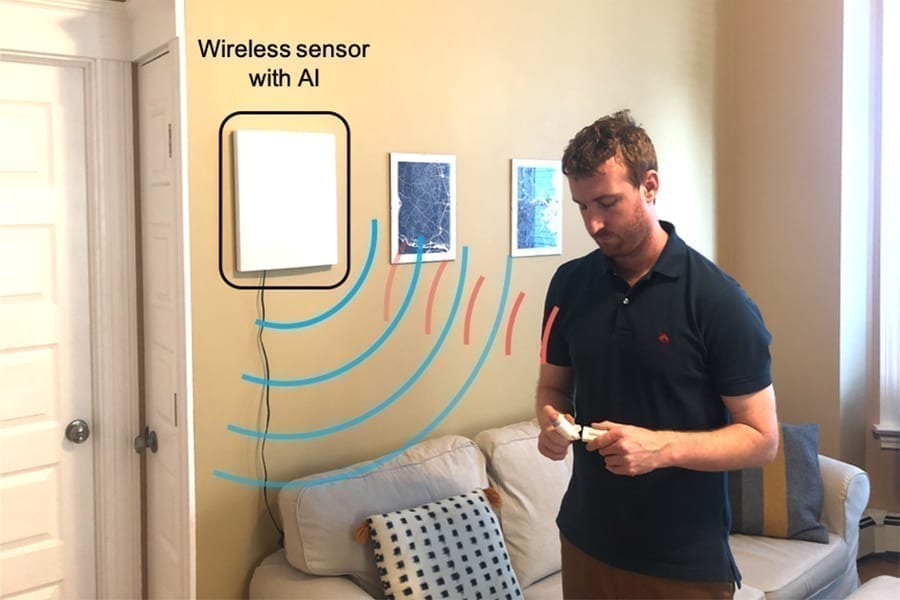
via Aalto University
The ability to distil images to their most essential components and anticipate new scenes is what could drive computer vision and robotics forward
Half a century ago, we expected the future to hold sophisticated computers and robot helpers to slash the time we spend on work and household chores.
Yet, while we now have nearly unlimited knowledge at our fingertips, the level of automation that some predicted still hasn’t come to be. What happened?
It turns out that things are a little more complicated than we expected.
‘It’s taken us a surprisingly long time to come to terms with how complex the world is,’ says Jaakko Lehtinen, an associate professor of computer science at Aalto University and distinguished research scientist at computer graphics firm NVIDIA.
Unsupervised learning
Lehtinen’s work focuses on Artificial Intelligence techniques that create new, realistic images, simply by looking at examples. The method has not just helped speed up tasks, which in the past could take a skilled professional days or weeks, to a matter of seconds but eliminated the need for human eyes all together.
‘Doing this without human supervision is a building block of intelligence,’ Lehtinen explains. ‘Looking at a large collection of images, the algorithm distils the essence of what it sees into a recipe, which it uses to create new images that show the same, hard-to-pinpoint laws and rules.’
With colleagues at NVIDIA, the techniques have, for example, created pictures of non-existent faces that look so eerily real, you could swear they were in the last movie you saw. Most recently, they have made their way into New Portrait tool in Adobe Photoshop, which users around the world can use to easily change the gaze, smile or even age of real faces.
Smarts for the real world
These are impressive achievements, but it’s easy to overlook the potential of this technology if we concentrate on image creation or manipulation. Lehtinen says that methods that learn to imagine what’s out there will be crucial to computer vision and robotics going forward.
‘To deal with a completely new environment, like your home or office, and all of the real-world scenarios that may occur there, a robot needs a really robust idea of what all kinds of different homes and offices look like. These techniques could finally help them deal with all that complexity.’
Original Article: AI technique captures complexity of human faces to help create realistic photo edits
More from: Aalto University
The Latest Updates from Bing News & Google News
Go deeper with Bing News on:
Artificial Intelligence techniques
- Air Force making gains in artificial intelligence with AI-piloted F-16 flight
The Air Force successfully gamed a dogfight between a normal F-16 and AI-controlled F-16, with the head of the Air Force riding in the front seat.
- US Creates Breakthrough Artificial Intelligence Technology for Fighter Jets
Piloting AI fighter jets is considered a revolution. On the other hand, this program means that AI holds weapons that can kill humans.
- Indore: Artificial Intelligence Useful in Alzheimer Diagnosis At Early Stage, Reveals IIT Indore Study
Indore (Madhya Pradesh): Indian Institute of Technology (IIT), Indore has conducted a study that revealed that advanced Artificial Intelligence (AI) techniques are useful in unlocking new potentials ...
- Artificial intelligence expands diagnostic horizons in coronary angiography
New insights from the AI-ENCODE study showed artificial intelligence (AI) successfully allowed the ... The AI-ENCODE study leveraged advanced machine-learning techniques to expand the range of data ...
- Artificial intelligence enhances monitoring of threatened marbled murrelet
Artificial intelligence analysis of data gathered by acoustic recording devices is a promising new tool for monitoring the marbled murrelet and other secretive, hard-to-study species, research by ...
Go deeper with Google Headlines on:
Artificial Intelligence techniques
[google_news title=”” keyword=”artificial Intelligence techniques” num_posts=”5″ blurb_length=”0″ show_thumb=”left”]
Go deeper with Bing News on:
AI powered photo editing
- Automatic Photo Editing: 7 Tips to Speed Up Your Workflow
In today's fast-paced digital world, photographers are constantly striving to streamline their workflow and save time. One effective way to achieve this is through automatic photo editing. By ...
- Oppo Brings AI Photo Editing Tool to Affordable Phones
debuting a bevy of AI-powered features on its Pixel 8 series, including photo-editing tools such as Best Take Swap and Magic Editor. Samsung followed in Google's footsteps unveiling a suite of ...
- Google to Bring AI Photo Editing Tools to More Devices for Free
After three years of reserving its AI-powered photo editing tools for Pixel users and paid Google One subscribers, Google is releasing those tools to a wide range of devices for free. Beginning ...
- Google Pixel 8's Flagship AI Photo Editing Feature Coming to iPhones
Google next month will make its latest AI-powered photo editing feature available to all users of Google Photos on iOS, the company has announced. Magic Editor, which featured heavily in last year ...
- These Google Photo Editing Tools Will Be Free Soon
Google has announced that some of its AI-powered editing tools will soon be free ... uses generative AI to easily drag and drop objects in a photo. There is one catch: Android and iOS Google ...
Go deeper with Google Headlines on:
AI powered photo editing
[google_news title=”” keyword=”AI powered photo editing” num_posts=”5″ blurb_length=”0″ show_thumb=”left”]










